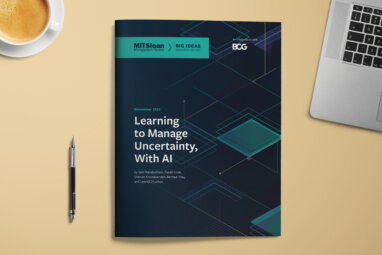Analytics as a Source of Business Innovation
The increased ability to innovate with analytics is producing a surge of benefits across industries.
Not long ago, Keith Moody was the only data analyst at Bridgestone Americas Inc. He was located in the credit division in Brook Park, Ohio, and saw analytics take off — in other companies. When Bridgestone Americas named a data-savvy executive, Gordon Knapp, as chief operating officer in March 2014, Moody was given the opportunity to build a new analytics department for Bridgestone Retail Operations, the company’s U.S. network of tire and auto repair stores. Today, Moody reports to the interim president, Damien Harmon, as director of analytics for Bridgestone Retail Operations, where he is making up for lost time.
Moody’s team is influencing management practice in virtually every part of the organization. Working with the real estate department, the analytics team pinpoints the best locations for new stores. Working with operations, it automates provision of inventory to 2,200 stores.1 Working with human resources, it determines the best allocation of 22,000 employees so that Bridgestone retail locations have the right people on-site to deal with peak demand — and don’t have workers sitting around with time on their hands. What’s more, Moody’s team is looking for ways to use driver data, such as odometer readings and other telematics data, to encourage car owners to come in for new tires or a tune-up before they hear a rattle under the hood and have to look for the nearest repair shop. This new reliance on analytics to inform executive decision making and to develop new services reflects a cultural shift for Bridgestone’s operations in the United States.
What’s happening at Bridgestone provides a window into the state of analytics across industry. After years of enthusiasm and frequent disappointment, a growing number of companies are developing the tools and, increasingly, the skills to move beyond frustration. They are progressively able to access large pools of data and use analytics to inform decision making, improve day-to-day operations, and support the kinds of innovation that lead to strategic advantage and growth.
MIT Sloan Management Review’s seventh annual data and analytics survey, conducted during 2016, reveals a sharp rise in the number of companies reporting that their use of analytics helps them beat the competition. These survey results include responses from 2,602 managers, executives, and data professionals from companies around the globe. (See “About the Research.�




